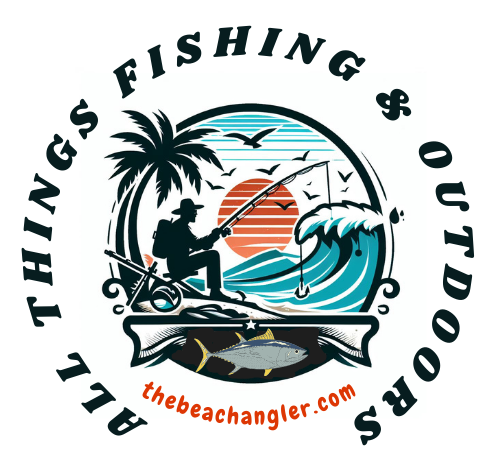You might be asking: What is an article about surfing doing on a fishing site? Well, I have spent many years on the beach surf fishing, and I’ve found that the fish may not always bite, but there are always waves to ride.
So, yes, I have done some surfing in my time, and we used to use surfboards to paddle out our shark rigs and baits. Before kayaks and drones, surfboards were our go-to for shark-bait deployment.
I have always found the beach fascinating, and riding a wave connects me with nature. This guide is for anyone just starting out in surfing. I share my experiences and lessons learned to help you begin your surfing journey safely and confidently.
Surfing isn’t only a physical activity; it’s also a way to enjoy nature and gain a fresh perspective on life. Learning new skills gradually makes the process less overwhelming.
Here, I outline essential steps to help you start with the right gear, choose a safe beach, take lessons, and build confidence in the water.
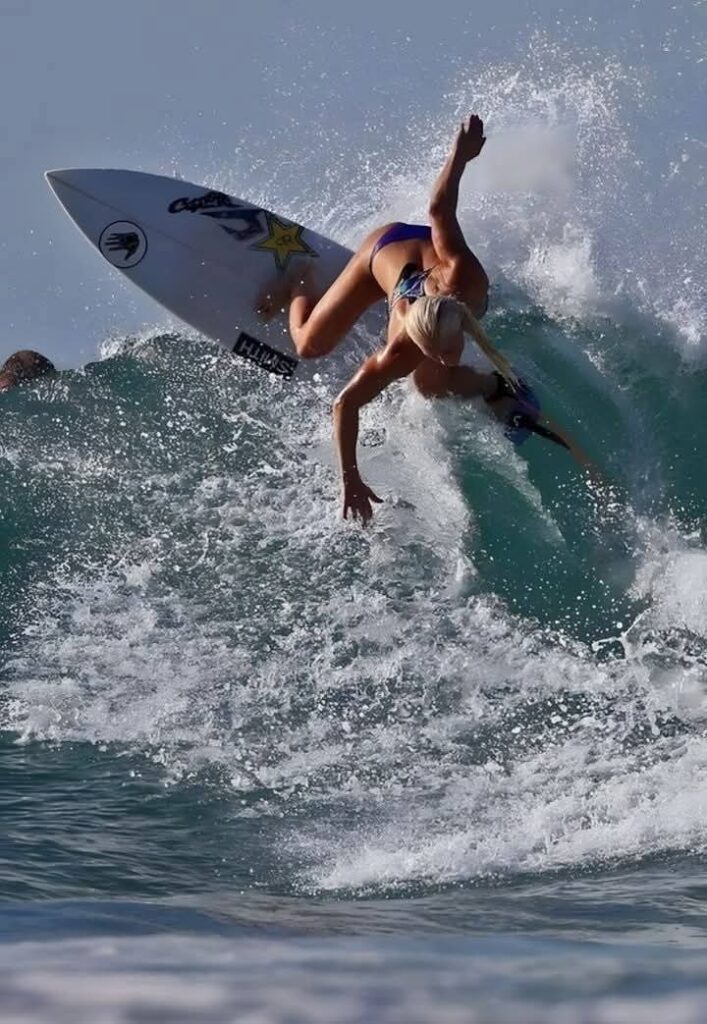
Step 1: Get the Right Gear
Before you hit the water, having proper gear is essential. I began with equipment that gave me stability and smooth movement. Starting with a beginner-friendly surfboard is crucial when you are just learning the basics of balance and paddling.
Beginner-Friendly Surfboard
A larger and wider board offers more balance while learning. I chose one known for its buoyancy. Such boards help in catching waves and lowering the risk of falls.
What to Look for in a Beginner Surfboard:
- Volume: More volume = easier paddling and catching waves.
- Length: Typically 7-9 feet for most beginners.
- Material: Soft-tops are best for safety and learning.
- Shape: Look for rounded noses and wide tails for stability.
Essential Accessories
- Wetsuit: In cold water, a wetsuit keeps you warm and comfortable.
- Leash: This attaches you to your board and is very important when you fall frequently as a beginner.
- Wax: Wax gives a boost to your grip and control on the board.
Ensuring you have the correct gear lays a solid foundation for your surfing experience and builds your confidence as you start tackling new skills.
Top 10 Best Surfboards for Beginners
1. Wavestorm 8′ Classic Surfboard
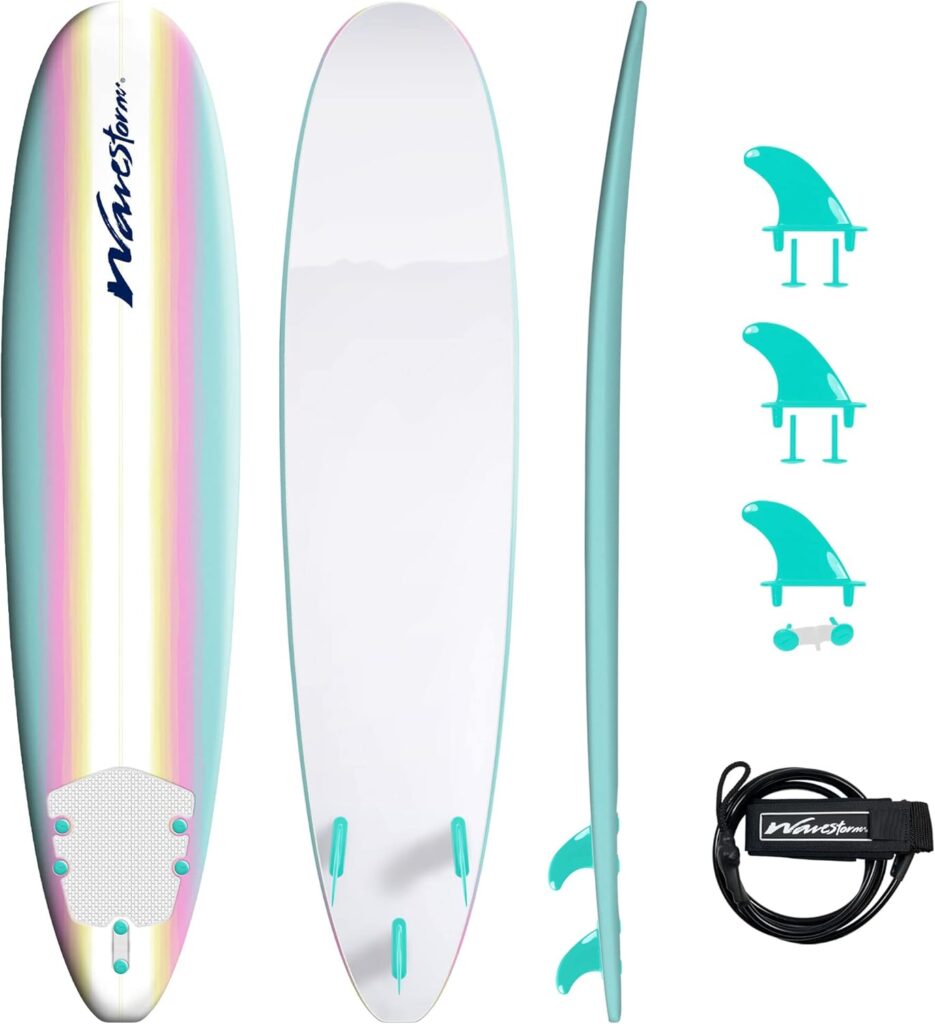
- Type: Soft-top
- Why it’s great: It’s one of the most popular beginner boards ever made—affordable, lightweight, and super forgiving.
- Perfect for: Total beginners, especially in small surf.
2. Catch Surf Odysea
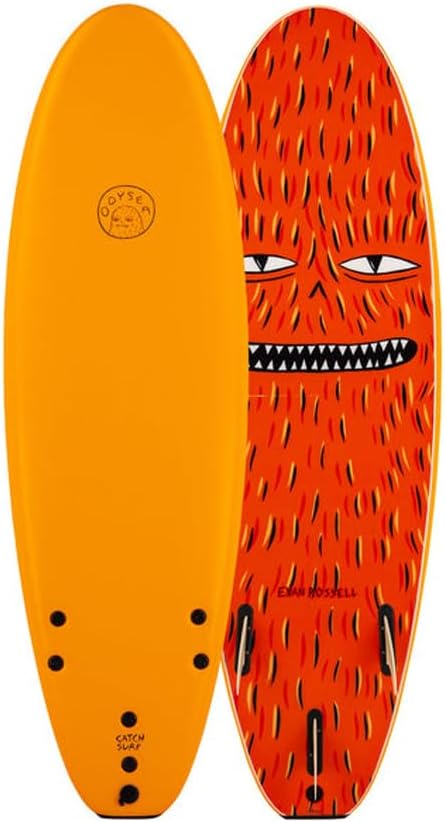
- Type: Soft-top
- Why it’s great: Retro look, high volume, very floaty—ideal for learning to stand up and ride.
- Perfect for: Beginners who want fun with flair.
3. Rock-It 6′ Albert Performance
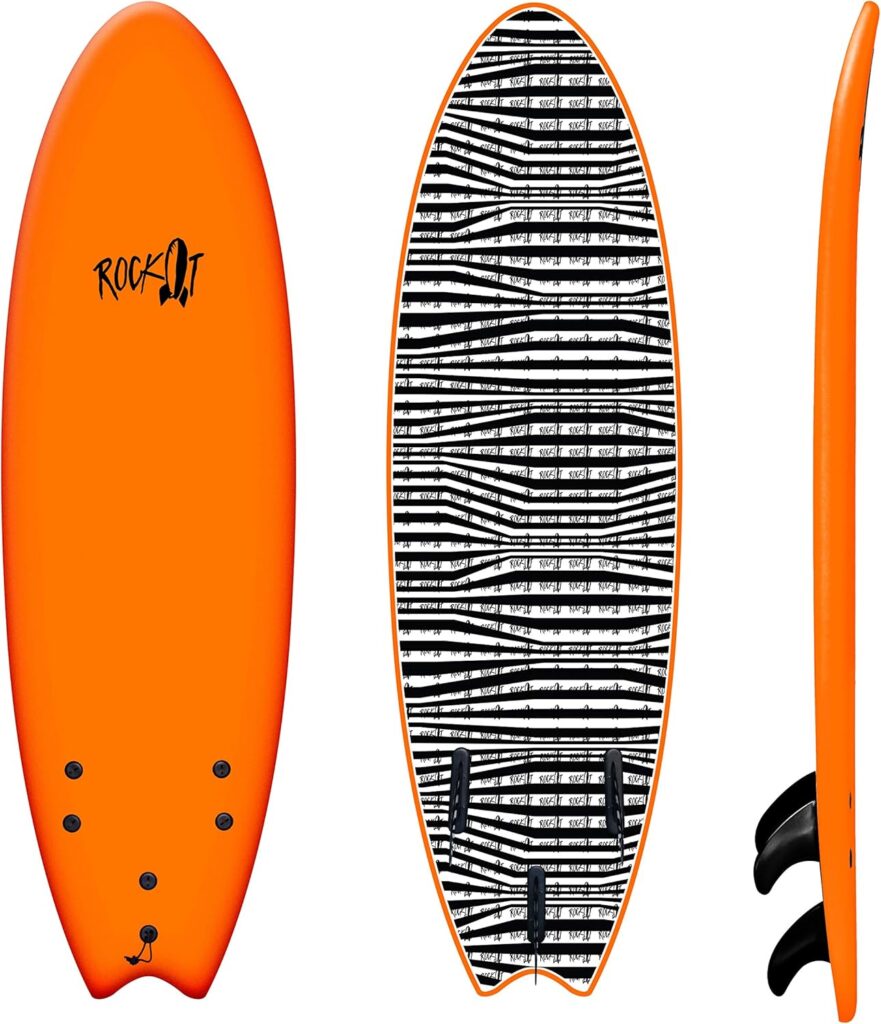
- Type: Soft-top
- Why it’s great: Durable EPS foam core, rubber safety fins, great for learning and progressing.
- Perfect for: Beginners looking for long-term use.
4. Funboard Surfboard
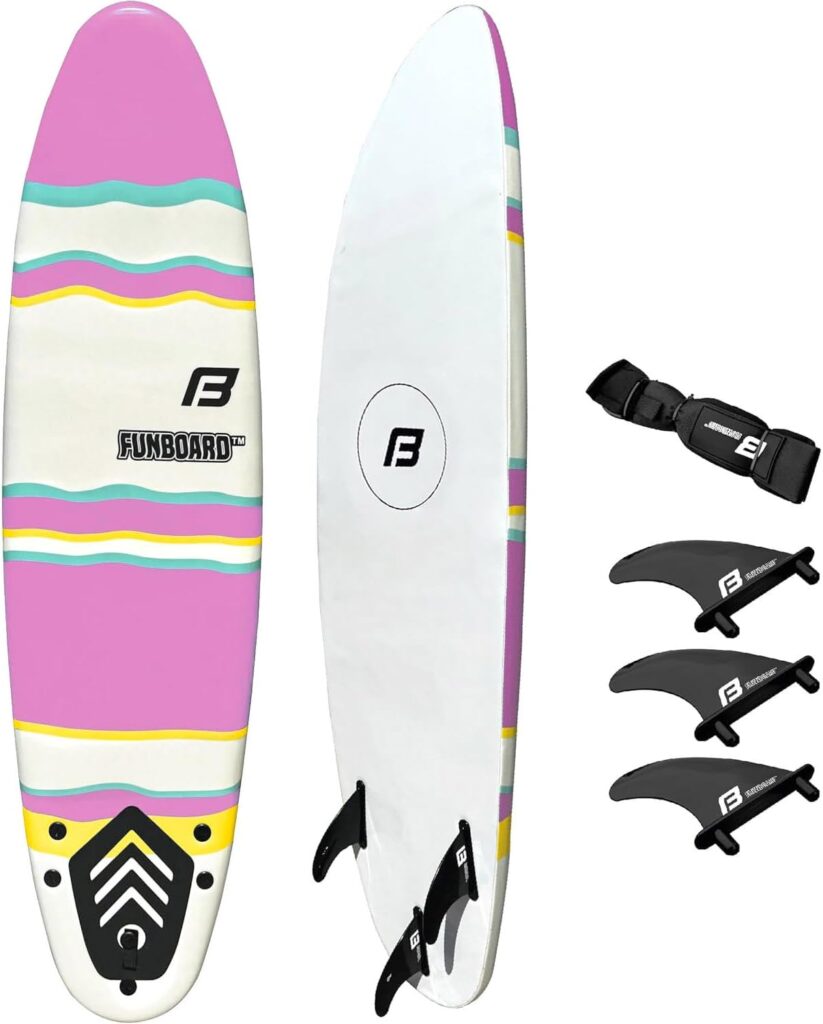
- Type: Soft-top minimal
- Why it’s great: It’s Shorter than a longboard but still beginner-friendly; great for smaller surfers.
- Perfect for Kids or lightweight adults.
5. Thurso Surf Spire 8 ft Soft Top
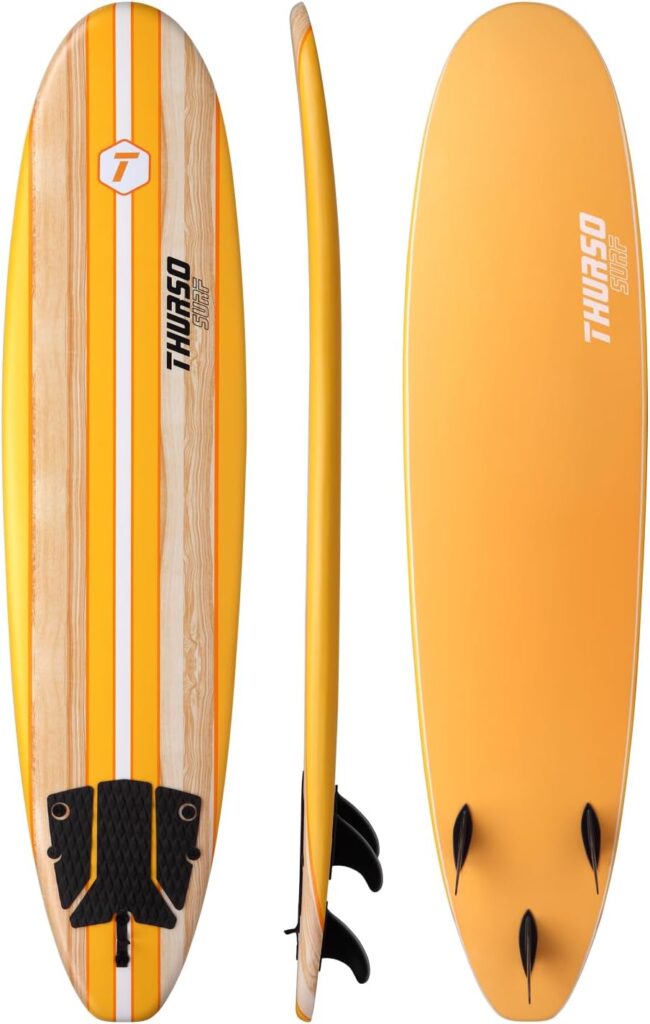
- Type: Epoxy/funboard
- Why it’s great: It’s Strong, light, and with more performance than a soft-top but still stable.
- Perfect for: Beginners who want to transition into more intermediate surfing.
6. FLOWBOARD Surfboard Softboard
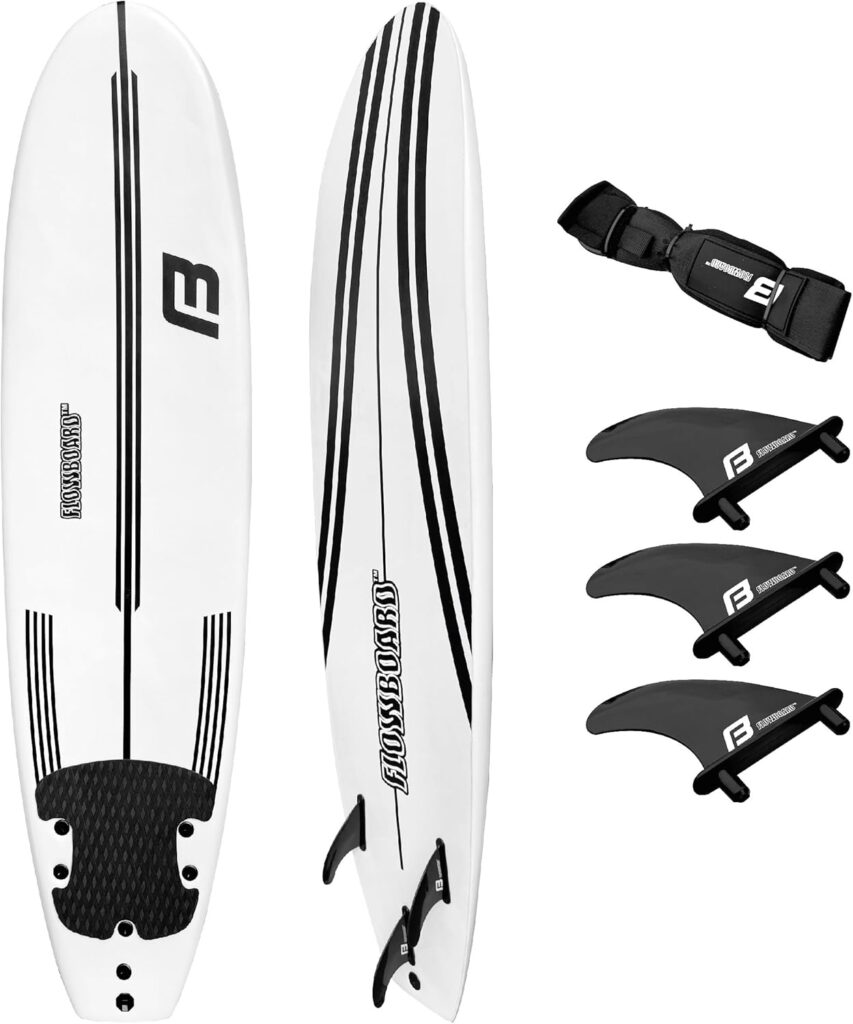
- Type: Soft-top
- Why it’s great: It’s very buoyant, safe, and easy to ride and comes in multiple sizes.
- Perfect for Learning the basics in mellow surf.
7. Thurso Surf Aero 7 ft Soft
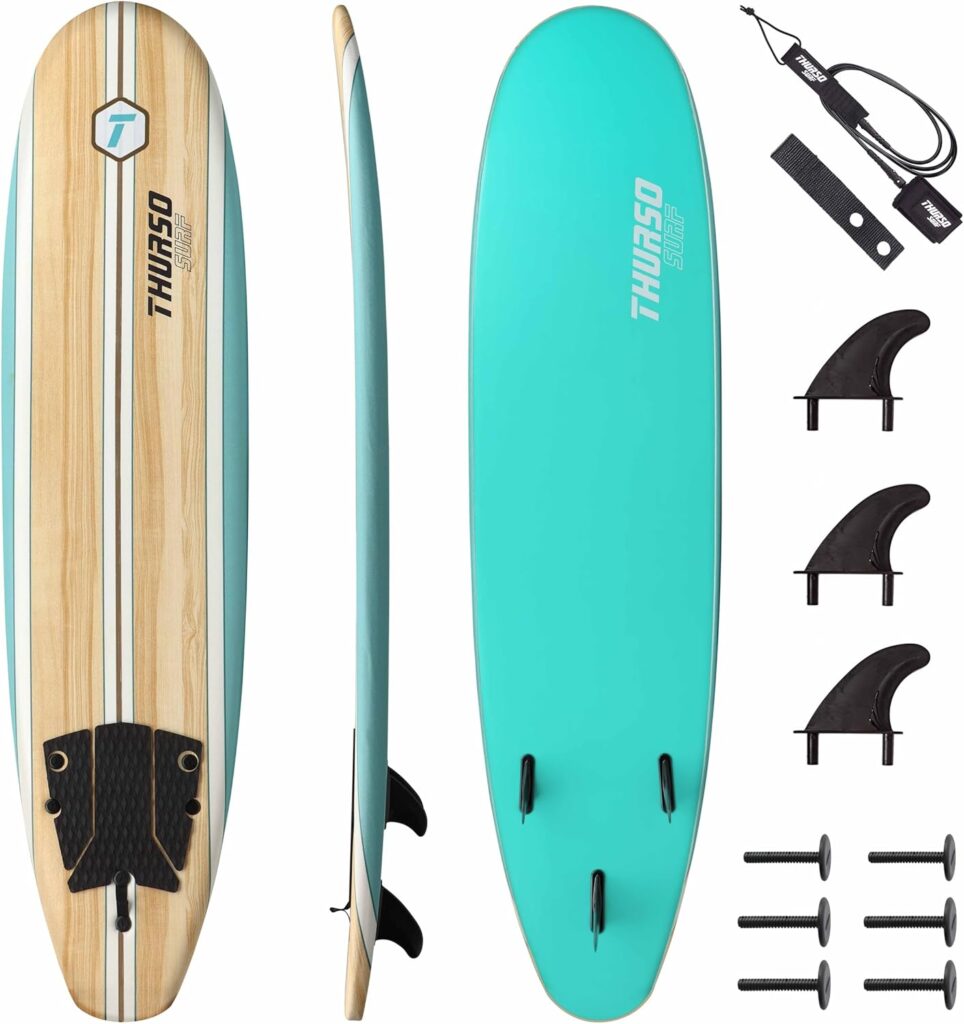
- Type: Soft-top
- Why it’s great: It has a Hybrid soft/epoxy construction, a strong beginner board that can last into intermediate skill.
- Perfect for Adults or teens who want a beginner board with some longevity.
8. California Board Company 7′ Classic
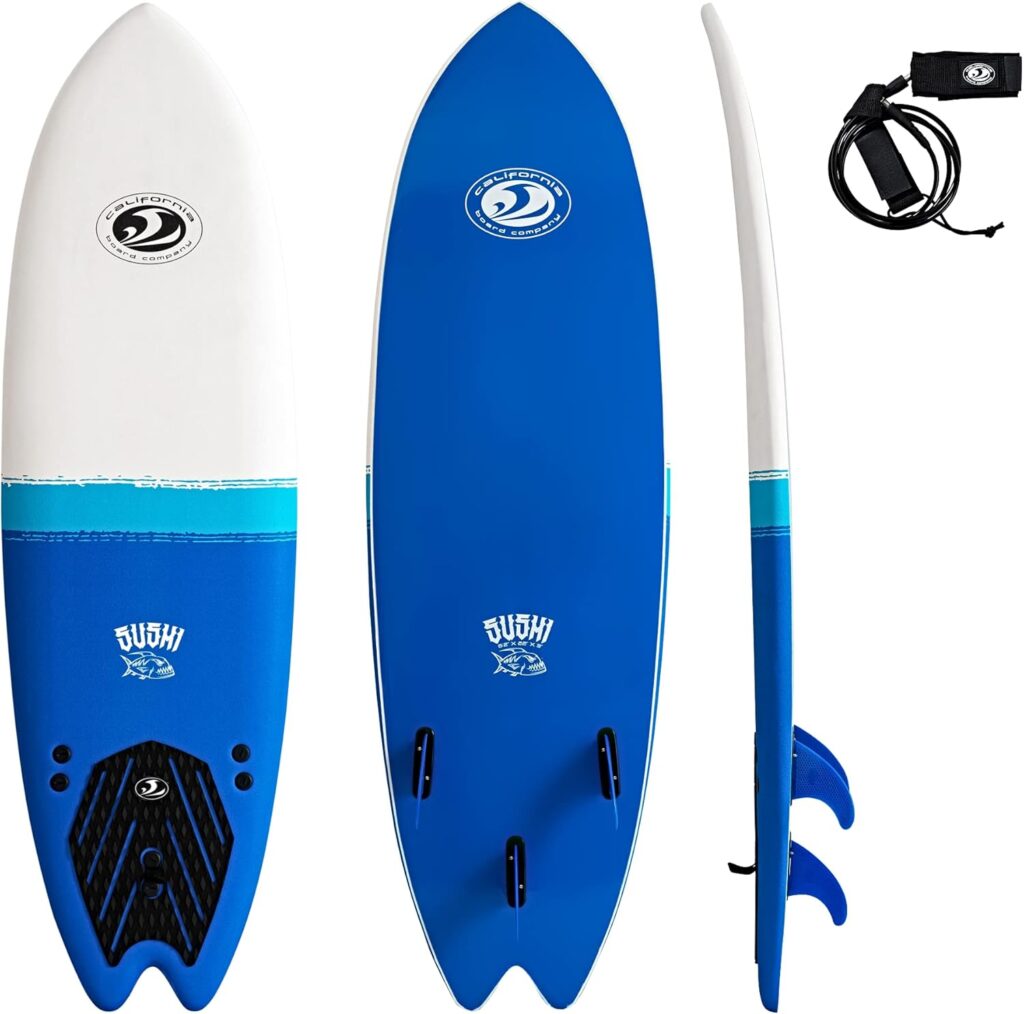
- Type: Soft-top
- Why it’s great: Classic foam board, budget-friendly, and ready to surf out of the box.
- Perfect for: Entry-level surfers on a budget.
9. Giantex 6′ Foamie
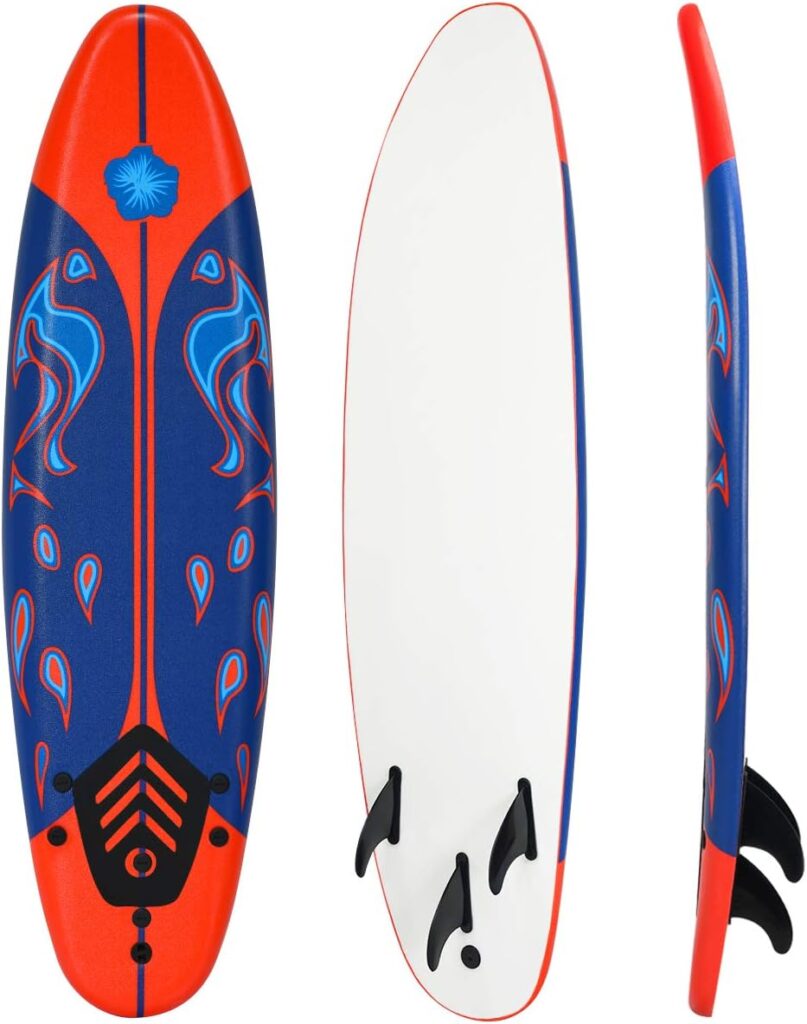
- Type: Soft-top shortboard
- Why it’s great: It’s Short and maneuverable but still has foam-top forgiveness.
- Perfect for: Younger or smaller surfers who want to learn on a shortboard style.
10. Wave Bandit Easy Rider
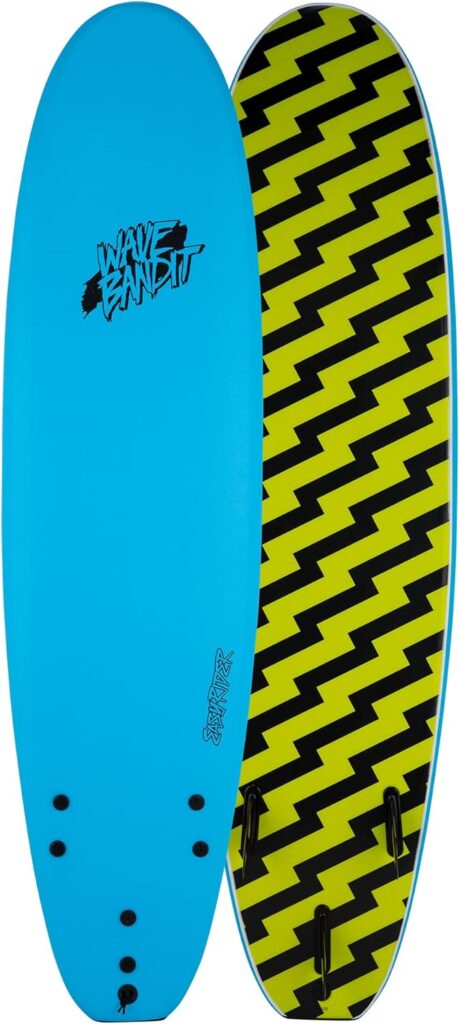
- Type: Soft-top
- Why it’s great: Designed by pro surfer Ben Gravy, it’s playful, durable, and perfect for small waves.
- Perfect for: Beginners who want a board they can grow with.
Step 2: Choose the Right Beach
Selecting a safe beach plays an important role in building your confidence. The right beach can significantly influence how quickly you learn.
Beginner-Friendly Waves
Look for beaches with gentle, consistent waves and sandy bottoms. Such settings let you focus on mastering basic techniques rather than battling strong currents.
Safety Considerations
- Lifeguarded Areas: Choose locations where lifeguards are present to boost overall safety.
- Surf Forecast: Checking the surf forecast ensures that conditions are right for beginners.
Choosing a calm beach where the waves break gently allows you to practice in a secure environment and quickly grow your confidence.
Step 3: Take a Surf Lesson
Signing up for a surf lesson is very important when starting out. Learning from experienced instructors can rapidly build a strong foundation, saving time and frustration.
Learning the Basics
Surf lessons cover essential skills like paddling, positioning on the board, and popping up onto your feet effectively. Early lessons helped me grasp these techniques and made the process of progress smoother.
Understanding Surf Etiquette
Good surf etiquette is as necessary as technical skills. Instructors explain the rules for sharing waves and being courteous to others, which keeps everyone safe and creates a positive atmosphere in the water.
Selecting a Surf School
Choose a school or instructor with a solid reputation and proper certification. This choice not only teaches you the correct techniques but also instills respect for the ocean and its environment.
Step 4: Practice on Land
Before fully committing to the water, practicing on land builds muscle memory and confidence. I spent time on the beach learning fundamental movements to prepare for real surfing.
Pop-Up Practice
Repetitive pop-up practice on sand until the movement feels natural is critical. Without the challenge of balancing on water, practicing on shore can greatly boost your confidence.
Stance and Balance
Mimicking the stance you’ll use on your board helps you get comfortable with the necessary positioning, smoothing the transition when you finally enter the water.
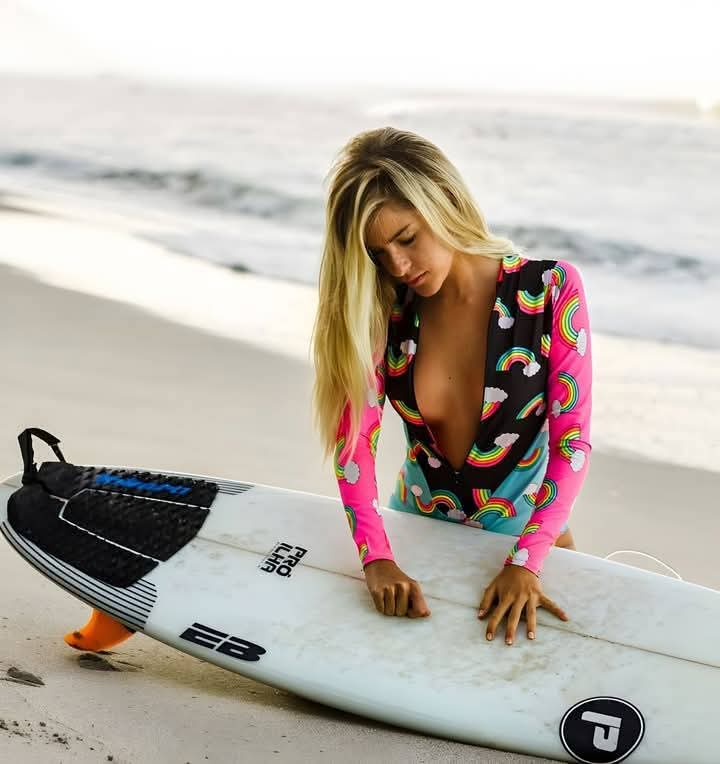
Step 5: Get Comfortable in the Water
Entering the water marks the next stage of your surfing adventure. When I first paddled out, I dedicated time to understanding the water’s rhythms. Patience is key as you adjust to the ocean environment.
Start in the Whitewater
Begin in the whitewater, where the waves have already broken and are less forceful. This zone offers a safer space to practice standing and riding small waves.
Paddling Techniques
Efficient paddling is essential. I focused on keeping my arms steady and conserving energy—a skill that naturally improves over time with regular practice.
Catching Waves
Catching a wave is extremely rewarding. Position yourself well, paddle decisively, and then use your pop-up skills to stand quickly. Each successful ride reinforces your learning and builds confidence.
Step 6: Progress Gradually
Your surfing ability improves best with gradual progression. I discovered that starting with small waves and then slowly challenging myself with larger ones helped me build technique safely.
Start Small and Practice Consistently
Beginning with manageable waves and practicing regularly turns small improvements into significant gains. Consistent practice is really important for steady progress.
Exercise Patience
Many falls and restarts are part of the learning process. Being patient and persistent is very important to building your skills and confidence over time.
Step 7: Respect the Ocean and Other Surfers
Respect is fundamental in surfing. Taking care of the ocean and showing consideration for fellow surfers creates a safe and positive experience for everyone involved.
Surf Etiquette
Follow simple rules like waiting your turn, not taking someone else’s wave, and staying at a safe distance. This careful approach minimizes conflicts and makes the experience more enjoyable for all.
Respecting the Environment
The ocean is a delicate ecosystem. Follow local guidelines to preserve beaches and marine life. Caring for the environment benefits every surfer now and in the future.
Step 8: Learn from Experienced Surfers
Observing experienced surfers can provide valuable insights into advanced techniques and strategies. Their skills can inspire you to refine your style and approach.
Observation and Practice
Watch how seasoned surfers select waves, paddle, and maneuver on their boards. Paying close attention to these details helps you understand practical techniques that you can adapt.
Mimicking Techniques
After observing effective methods, practice and adjust them to fit your comfort and ability. This focused learning approach allows you to develop a personal style on the board.
Step 9: Enjoy the Ride
Above all, surfing is about savoring the experience. Even when things don’t go perfectly, keeping a positive attitude makes every session memorable.
Embracing the Experience
Every wave you ride is a reminder of why surfing is so fulfilling. The rush of catching a wave and the calm afterward combine to create an awesome experience.
Connecting with Fellow Surfers
Building relationships with other surfers enhances the journey. Sharing tips, stories, and challenges helps form a supportive community in the water.
Final Thoughts & Next Steps
A beginner’s guide to surfing isn’t about rapid progress; it’s about steady improvement and enjoyment. A systematic approach—from getting the right gear and choosing a safe beach to taking lessons and consistent practice—creates a solid basis for your surf ride.
Your Learning to Surf Action Plan
- Choose gear suited for beginners, including a stable board and essential accessories.
- Select a beach with calm, gentle waves and active lifeguard support.
- Enroll in a surf lesson with certified instructors to cover the basics.
- Practice your pop-up and stance on land to build muscle memory.
- Begin in the whitewater to feel comfortable before advancing to larger waves.
- Gradually increase the challenge as your skills improve.
- Respect both the ocean and other surfers by following proper etiquette.
- Learn from experienced surfers by watching and adapting effective techniques.
- Most importantly, enjoy every moment and celebrate your progress.
Every session in the water marks a step forward in both skill and confidence. Reflect on these tips, plan your next surf session, and enjoy the process of riding the waves. What will be your first step on this surfing ride?
Check Out Our Most Recent Articles:
- The Foreverlast Tackle Harness
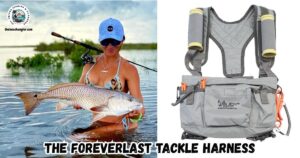
- Tips For Fishing In Different Weather Conditions
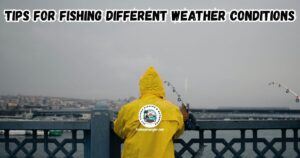
- 5 Revolutionary Features of the Minn Kota Riptide Instinct Quest Series Trolling Motor
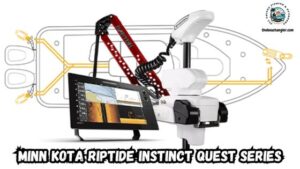
- 5 Features The Z-Man HerculeZ Swimbait

- 7 Tips for Fishing Gulf Of Mexico Nearshore Rigs In Texas

- 6 Top Features of Okuma Hakai Baitcast Reels
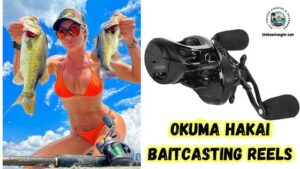
As always, stay safe, enjoy the journey, and please try to leave it cleaner than you found it. If you have any comments, questions, ideas, or suggestions, please leave them in the comment section below, and I’ll get back to you ASAP. You can follow us on Facebook: Rex The Beach Angler, Instagram: thebeachangler7, Twitter: @AnglerBeach, and YouTube: Man Art Creations.
P.S. Thanks so much for checking out our blog; we really appreciate it. Just so you know, we may receive a commission if you click on some of the links that appear on our site. This helps us keep our content free and up-to-date for everyone. We appreciate your support!
